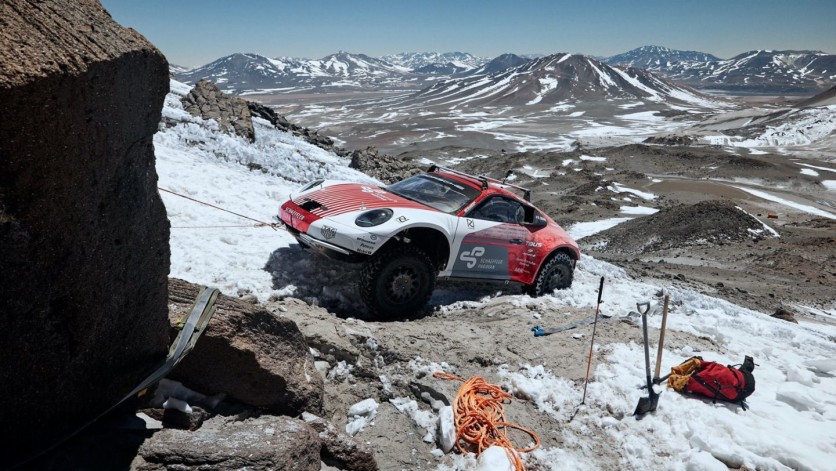For almost 60 years, the Porsche 911 has been tested to the maximum both on the racetrack and on the open road. Now, a new page for the books is once again written as a special pair of experimental 911 sports cars are put to the test in an environment with thin air, low temperatures, and no roads.
In order to test the 911's capabilities, a crew led by endurance racer and explorer Romain Dumas has selected one of the planet's most challenging locations: the steep slopes of the highest volcano in the world, Ojos del Salado in Chile.

Braving the Volcano
The 911, driven by Romain Dumas, reached a height of 6,007 meters (19,708 feet), tackling more challenging gradients and ice fields that put the team's expertise to the test while the temperature dipped to around 30 below zero.
According to Porsche's press release, there was only half as much oxygen in the location compared to sea level.
The test's maximum limits, impassable walls of seasonal snow and ice high up near the summit, gave a fascinating preview of what the cars are capable of under the right circumstances. For the time being, the test is finished, and the crew is thrilled with the results.
"We have enormous respect for those who have gone higher. No one has seen so much ice and snow up towards the top of the volcano, but despite this we went over 6,000 meters up, to the point where the walls of ice and snow meant we could go no further," Dumas said in a press release statement.
"We're really proud of what the car and the team are capable of first time out - hopefully we can count on many more adventures in the future."

Read also : Porsche Converts 911 Carrera 4S With Portal Axles, Off-Road Friendly 911 to Launch Soon?
911's Special Equipment
Roll cages, carbon fiber seats, and harnesses were first installed to ensure that the two cars would meet the necessary safety standards for such a project. The addition of portal axles increased ground clearance after that, according to Porsche.
The automobiles also have specialized underbody protection made of lightweight but incredibly durable Aramid fiber to allow sliding over rocks.
The Porsche Warp-Connecter was also thrown into the mix. It was initially created for motorsport applications since it creates a mechanical connection between all four wheels to maintain a constant wheel load even when the chassis is subjected to high movement, enhancing traction.
A sophisticated steer-by-wire technology was employed in conjunction with manual, switchable differential locks. Lastly, to make room for the 310 mm wide off-road wheels and tires, a winch was put to the front of the car, along with updated bodywork.
The cooling system also needed to be elevated for the car to travel over more challenging off-road terrain safely. As a final touch, two distinctive liveries were put to the bodywork: one used the same Porsche Motorsport color scheme as the 963 LMDh racer, while the other was a livery inspired by the 911 designed by the style team in Weissach.
Related Article : Porsche Sets in Motion Plans for $50M Solar Powered Microgrid at US Headquarters to Diminish Carbon Footprint
This article is owned by Tech Times
Written by Jace Dela Cruz
ⓒ 2025 TECHTIMES.com All rights reserved. Do not reproduce without permission.




